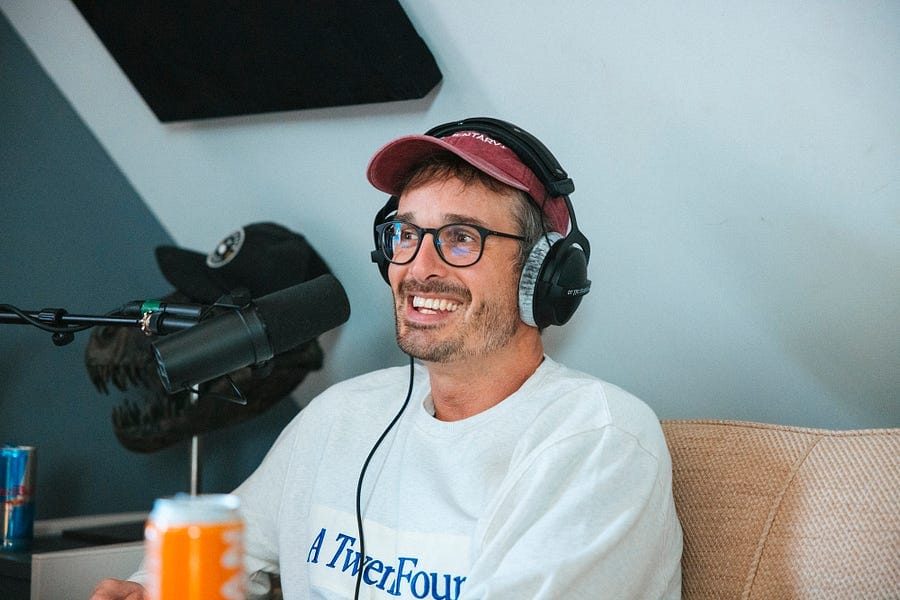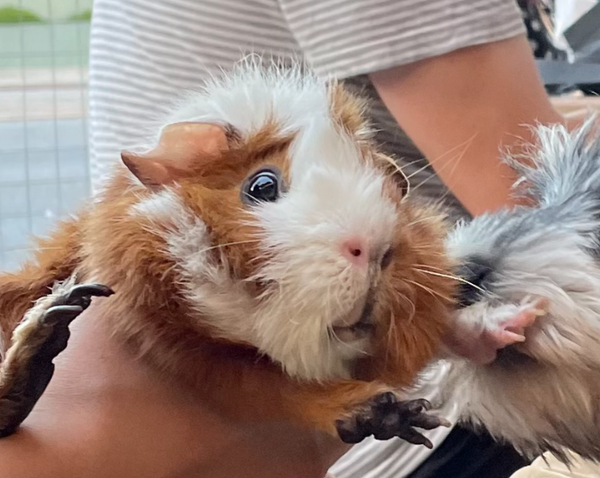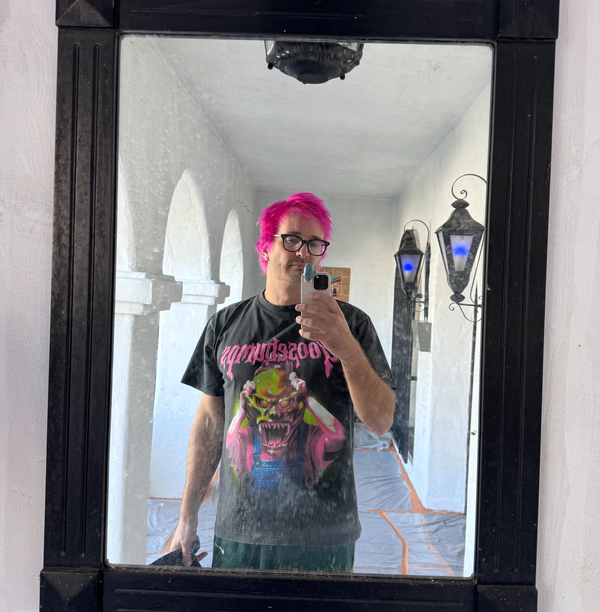Was The Assassination Attempt Fake?
With Trump standing triumphant, there's a lot of talk of a false flag operation.
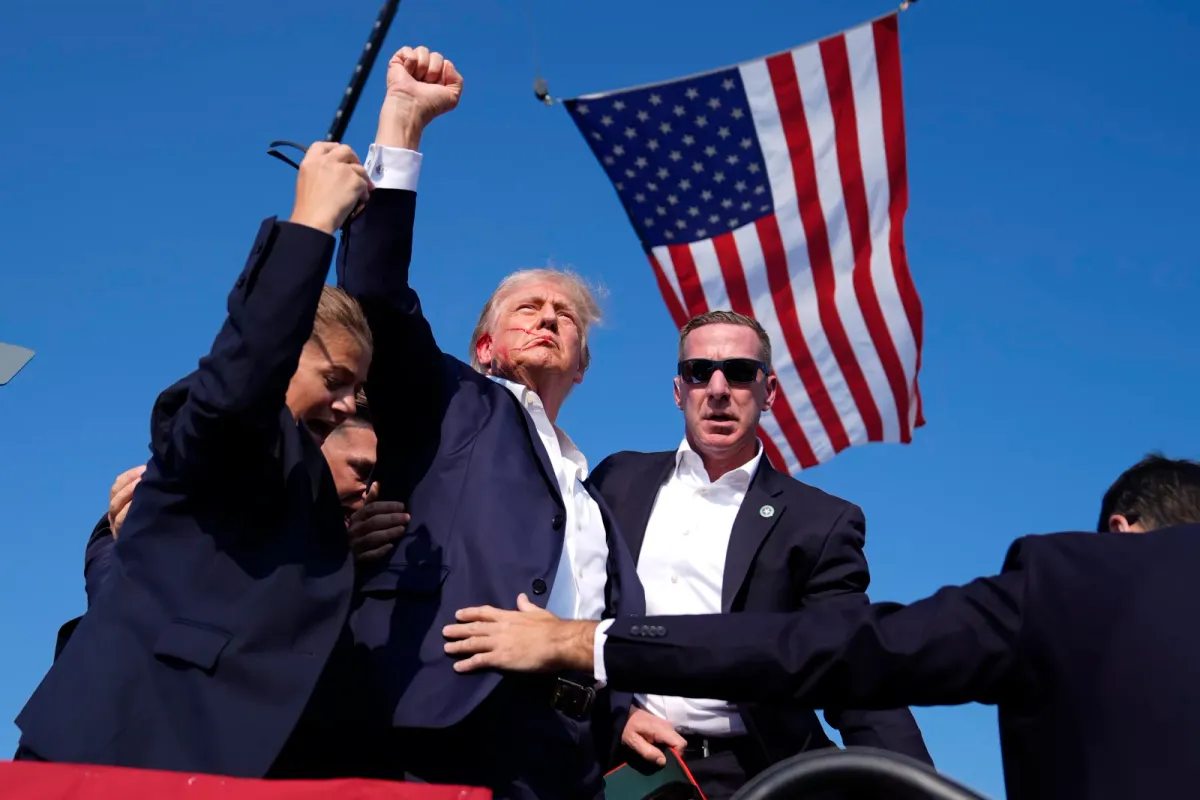
Hi,
It’s in incredible photo, and we’re going to be talking about it for a long time:

You can watch what happened on YouTube in real time, as a 20-year-old from Pennsylvania lets off a series of gunshots at former president Donald Trump. Matthew Crooks was a registered Republican, and yesterday positioned himself on the roof of a bottle manufacturing plant with what law enforcement have described as an “AR-style rifle”.
Trump had been speaking for a little over five minutes when Crooks, positioned on a rooftop nearby, started firing. Trump slapped at his neck as if stung by a bee, before ducking to the ground as secret service agents swarmed in to protect him. The crowd is screaming, either cowering or running. About a minute later, Crooks is shot dead, and Trump rises and pumps his fist in the air as he’s escorted away.
An assassination attempt on Donald Trump — and the world’s worst people almost immediately came to the surface. Elon Musk suggested to his 189 million followers it was “deliberate”:
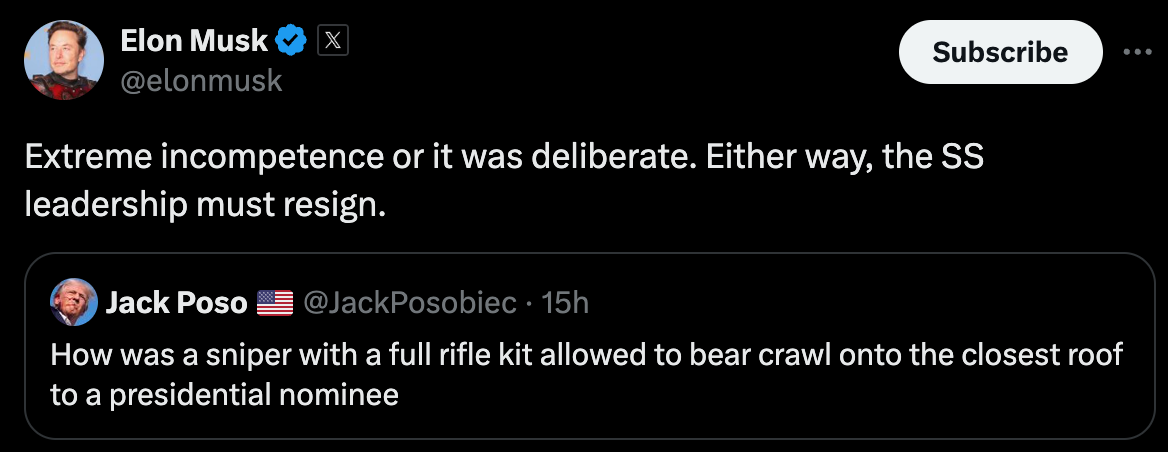
Elon wasn’t alone — and it wasn’t just the centrists or the right suggesting the whole thing was some kind of false flag operation. When I tweeted about the shooting saying it would bolster Trump’s success, my replies were littered with people suggesting the whole assassination attempt was faked.




As I scrolled through online discussion I was dismayed to see that this perspective was incredibly common, and spreading.
And so, with his permission, I wanted to share a piece my friend (and co-director on Tickled) Dylan Reeve just wrote on his excellent newsletter, Number 8 Haywire.
It looks at the conspiracy claims, and what actually happened.
Maybe This One Is A False Flag?!
by Dylan Reeve (first published on Number 8 Haywire)
The thought process behind this is no different to that which underlies 9/11 Truthers, Sandy Hook deniers and other conspiracy theorists: Something has taken place, it seems likely to have a big impact on politics, or law, or public perceptions, and it looks a little bit weird on the face of it.
And it does look weird.
In the very first moments we hear loud pops and see Trump react in a pretty nonchalant way, as if he’d been bitten by a mosquito or, at worst, hit with a BB pallet.
However, thinking that something looks not how you’d expect is one thing. But choosing to believe it actually is something entirely different from the plain interpretation is pretty much the border of conspiracy theory territory.
But, of course, Trump’s immediate reaction and the confusion that followed isn’t all we have.
In the minutes after the event more details began to filter out. First, a report that “the shooter” had been “neutralized” and then reports of first two, then three members of the crowd having been shot, one fatally.
Then an interview from the BBC with an eyewitness who described seeing a man with a rifle crawling up a roof outside the security perimeter, and doctor who rendered aid to one of the bystanders.
And within an few hours we had dozens of high quality press photos and videos widely available, including one that will likely becoming iconic for Trump.
At this point, if you want to assume that what took place wasn’t pretty much what it seemed, you need to confront some pretty stark implications.
Conspiracy theorists often talk about “being skeptical of the official story” but don’t often apply that skepticism to the counter-factuals that would be necessary to support their alternative accounts.
First let’s look at the outcomes desired by a theoretical conspiracy (in this case, presumably, enacted by Trump’s campaign):
- News Coverage — Trump will be the number one story everywhere and not for something bad that he’s said or done.
- Imagery — The image of a defiant and bloodied Trump will surely come to define the later months of this campaign.
- Attacking Opponents — A politically motivated attack against Trump can be laid at the feet of Biden and his supporters. They, the Trump campaign will say, have incited this.
- Mobilising the Base — A significant part of Trump’s campaign this time, and in his prior runs, has been painting him as an enemy of the Deep State. Playing a “they tried to kill me” angle is the pinnacle of this messaging.
And to be clear, those things will all, almost certainly, be a part of what follows this event. So that certainly works in favour of a conspiracy angle.
But what about the situation itself?
Those outcomes are all achieved from an attempt on Trump’s life. But they would all be far overshadowed if it were proven the event was fake and carried out by Trump himself.
So, with that in mind, why would you choose to do it in an open event with hundreds of journalists, TV cameras, photographers, and of course, thousands of supporters all with cellphones capable of recording 4K video? It’s uncontrolled, and there’s so much that could go wrong.
There were photographers close enough to get photographs like this, would it be sensible to fake injuries in such a highly observed situation?
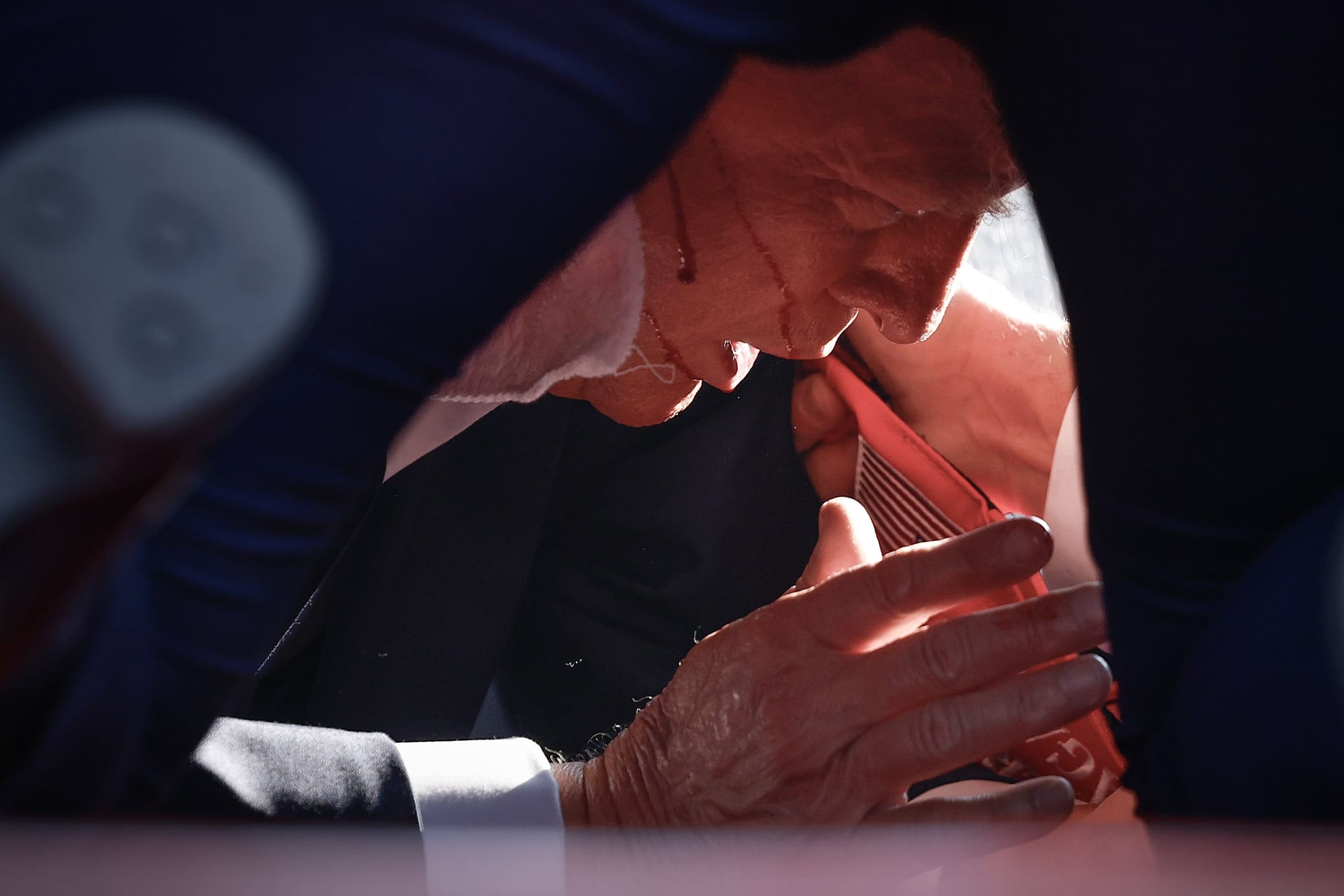
You could achieve the same with a much more controlled event in a more private environment where the narrative could be carefully managed.
A sensible project manager would look at the environment of Trump’s Butler, Pa. rally and say, “the risk here is too high.”
What about the event itself?
It was broadcast and streamed live by multiple outlets. Any of us can watch HD video now that clearly features the sound of shots and an immediate reaction from Trump.
Press photos that were released in the hours after the event showed blood on Trump’s hand in the moments after he touched his ear, and one even caught the bullet in flight.
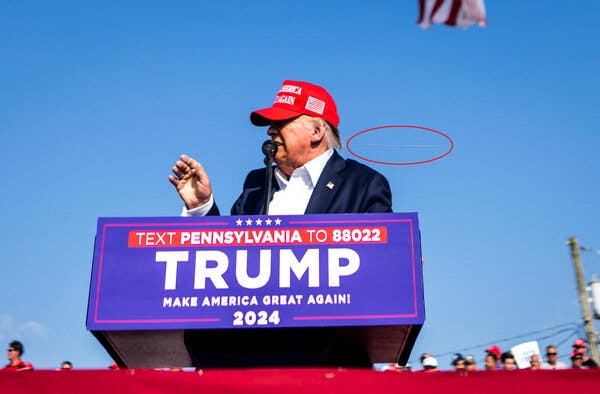
Videos have since emerged on social media that make it clear that some in the crowd spotted the shooter in the moments before the first shots were fired, in addition to the BBC interview with an eyewitness who saw him.
Law enforcement sources have confirmed the death of the shooter, and that two members of the crowd were critically injured and a third killed.
These are the things we can easily see and verify ourselves from multiple sources.
So now we have to build that counter-factual and critically examine whether it seems the best way to explain what we have seen to take place.
The Conspiracy Claim
Many people could come up with different specific details, but this is the basic claim that you’re making if you suggest what we’re presented isn’t substantially what it appears to be, and instead is some type of staged event or false flag attack.
The Shooter:
The conspirators (we’ll assume they are the Trump campaign) have had to successfully recruit a would-be assassin who will fire live rounds at a crowd of people, with counter-snipers and dozens of highly armed specialist law enforcement officers in the immediate vicinity.
They must, presumably, not let him know too much about the plan in case he is intercepted before he can execute it. A trial of an attempted assassin explaining he’d been hired by the Trump campaign wouldn’t be good.
And the shooting has to take place — he can’t be caught, or killed, before having the chance to fire the key shots in the direction of the target. So, do the police and Secret Service snipers need to be in on it?
Finally, the patsy assassin has to be willing to die for this mission, because that’s a very likely outcome. They must be a good enough shooter that they can shoot near the former President but not hit him.
The Candidate:
Former President Trump must be ready to react in an instant. The moment a shot rings out he must reach up to his head and somehow bloody it.
Perhaps it’s a small but high volume blood capsule secreted behind his ear, or maybe he’s executing the old professional wrestler trick of cutting himself with a small blade.
But either way, he only has a fraction of a second to do it and it can’t be caught on camera by any of the press or thousands of spectators.
The Photo:
Somehow the Trump Campaign has to ensure that Trump’s defiant stand — bloodied with a raised fist and a flag flying in the background — takes place and is captured by a photographer.
What if the Secret Service agents who are sworn to protect him don’t allow him to stand in that moment? What if the photographer isn’t in place in time? What if the blood pack or sliced ear hasn’t delivered the desired look?
Were the media and Secret Service in on it? In some scenarios it’s likely at least some of them would have to have been.
The Conclusion:
Saying that “it’s too convenient” or “something doesn’t seem right” is, effectively, suggesting that all this took place. That Trump, and multiple advisors, decided they were willing to kill people, including one of their own conspirators, for a photo op that could have gone wrong at any moment.
The Alternative
So what is the official story? Well it’s yet to be fully told, but piecing together what’s been made available in the hours after the event we have a fairly coherent and understandable event.
The Shot:
This is the only particularly vexing part of the event, and what ultimately forms the basis of the conspiratorial thinking that comes up around it.
We have to believe that a determined assassin put together a plan to make his way to a vantage point outside the security perimeter of the event, with his AR-15 rifle, shoot at one of the most protected people in the US… and miss.
Well, almost miss.
To simply clip Trump’s ear while missing the rest of him entirely seems impossible (editor’s note: I agree. Trump does have a very big noggin). It’s clearly not, because a bullet has to go somewhere… but the likelihood is certainly low, and it definitely not a shot that could be made on purpose.
It is, simply put, an incredible fluke.
The Reaction:
None of us have been shot in the edge of our ear by a high-velocity projectile. And we’ve never seen it happen before. We don’t know what we should expect to see.
But confusion and surprise seems to be what’s evident in the moment, and photographic evidence of a bullet and blood immediately on Trump’s hand support that part of the event.
The other part of the reaction that seems unusual to us is that Trump was able to stand defiantly as Secret Service tried to lead him away. But again, we haven’t see this before. We’ve occasionally seen Trump and other protectees led away, but none in circumstances like this. Agents will have known in the moment that the shooter had been “neutralized” and Trump was still ambulatory. Their preference will have been that he stand and walk with support, which is what happened.
But as he stood, he took the opportunity to project his strong image. It’s the sort of thing that isn’t out of character with how he likes to project himself at his public events.
The Media:
The reactions we see from media in the moment are totally responsive to an unfolding situation. Photographers on the ground can be seen in footage reacting in a variety of ways, some seeking cover, others responding seemingly on instinct to capture an historic event unfolding.
This is what we see members of the media doing all around the world endlessly. In war zones and dangerous environments — capturing the events around them with little thought beyond the immediate moment.
Photographers, with cameras trained on Trump for much of the event, were in the right place and the right moment. Thousands of frames were captured, and we see the best of them.
The Evaluation
Fundamentally what we need to do to evaluate a conspiracy theory like this is look at the conspiracy claim versus the “official story” and then apply Occam’s razor — the rhetorical principle that suggests the simplest explanation is probably the best.
So in this case we compare:
- A complex conspiracy played out in front of the world’s media and engineered by a former President along with his inner circle and, possibly, members of law enforcement, the Secret Service and Pulitzer Prize winning photographers.
to
- A chaotic event that could easily have gone in any number of different ways, captured by expert photographers and camera operators in which an image-obsessed former President made sure to use the moment to build his brand.
One is complicated, vulnerable to multiple points of failure, and requires the involvement of many individuals, all of whom must be trusted to never disclose what they were a part of.
The other is a horrifying event with a fluke outcome that still took the life of one innocent bystander, left two others with critical injuries, and ended the life of the person who set it in motion.
To continue to assert, just because the outcome favoured Trump and will undoubtedly be used to further his campaign, that he was responsible for it is implausible a best, and viciously callous at worst.
It is not far removed from those who, upon seeing reactions they felt were “off” decided the parents of children killed at Sandy Hook Elementary School were paid actors taking part in a plot engineered to enact gun bans.
-Dylan Reeve, Number 8 Haywire.
David here again.
When I interviewed journalist Elizabeth Williamson last month about her coverage of the Sandy Hook shooting, most of our conversation turned to the online conspiracy theorists who claimed the whole shooting never took place.
She spoke about how things leapt from online discourse, to the families of victims being harassed at their homes and at the grocery store for lying about their dead children.
Over the last few years I think I’ve fallen into a trap of believing it was just the right wing edgelords who loved talking of false flag operations.
With the dialogue around yesterday’s assassination attempt on Donald Trump, I realise the left is equally capable of going down the rabbit hole.
My friend Matt Dunphy put it really well:
“That writing was on the wall in 2016. There are elements of the far left and far right that seem to bend around the spectrum, touch, and hold hands. There’s been a war on critical thinking in this country for at least as long as I’ve been alive.”
Look — I get it.
I mean, how can we trust a witness who looks like this who said he saw the shooter on the rooftop how can he be real what is going onnnnnn, right?
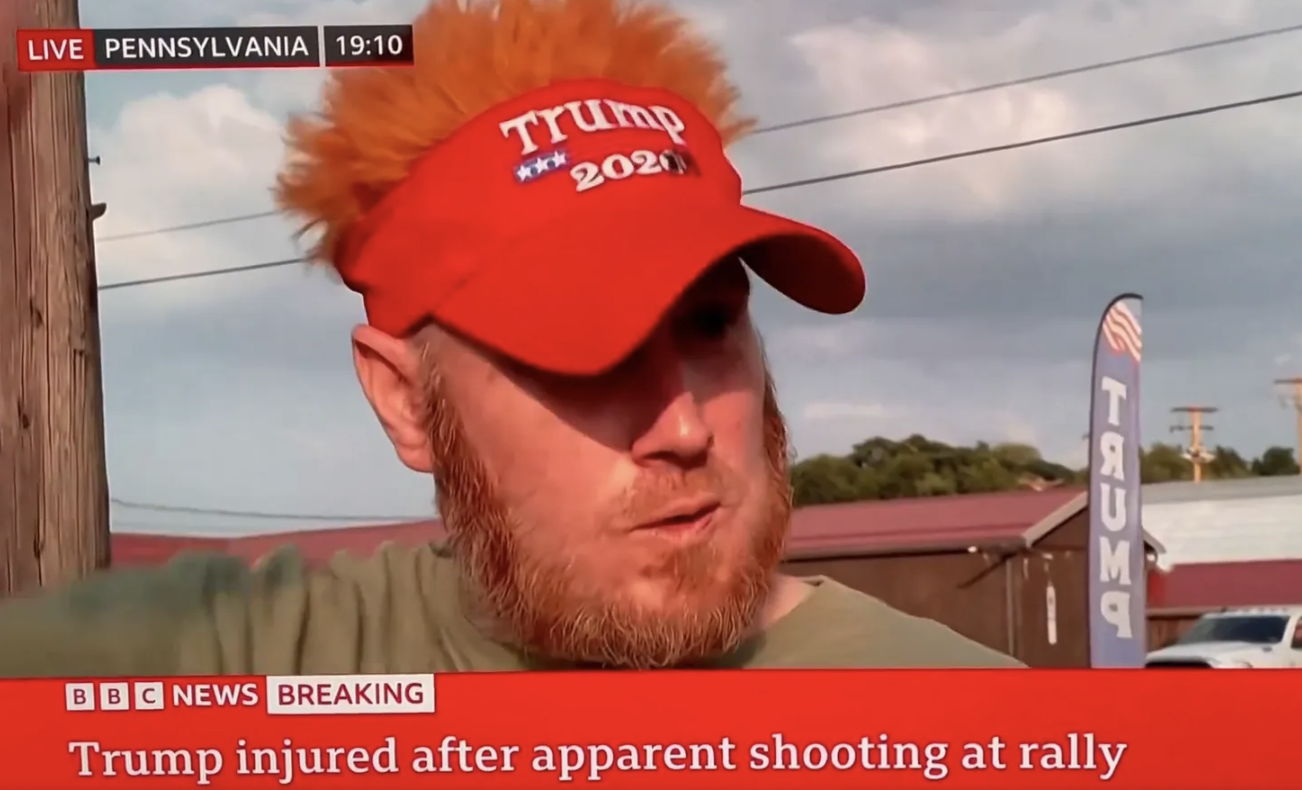
I get the temptation to explain away the chaos with a plan. But, orange hair or not, let’s remain critical and remember the simple truth: Usually, it’s all just chaos.
David.
Webworm is a reader-supported publication. To all those who choose to pay for it, thank you. I’ll be doing an AMA with you soon!
